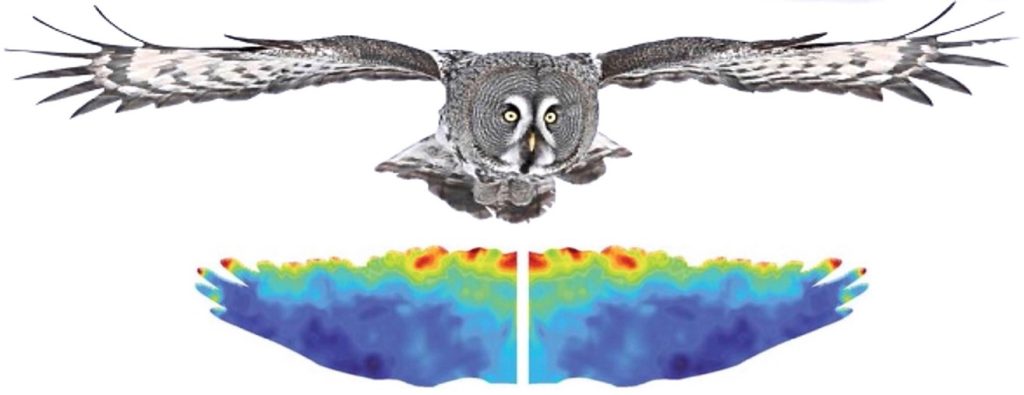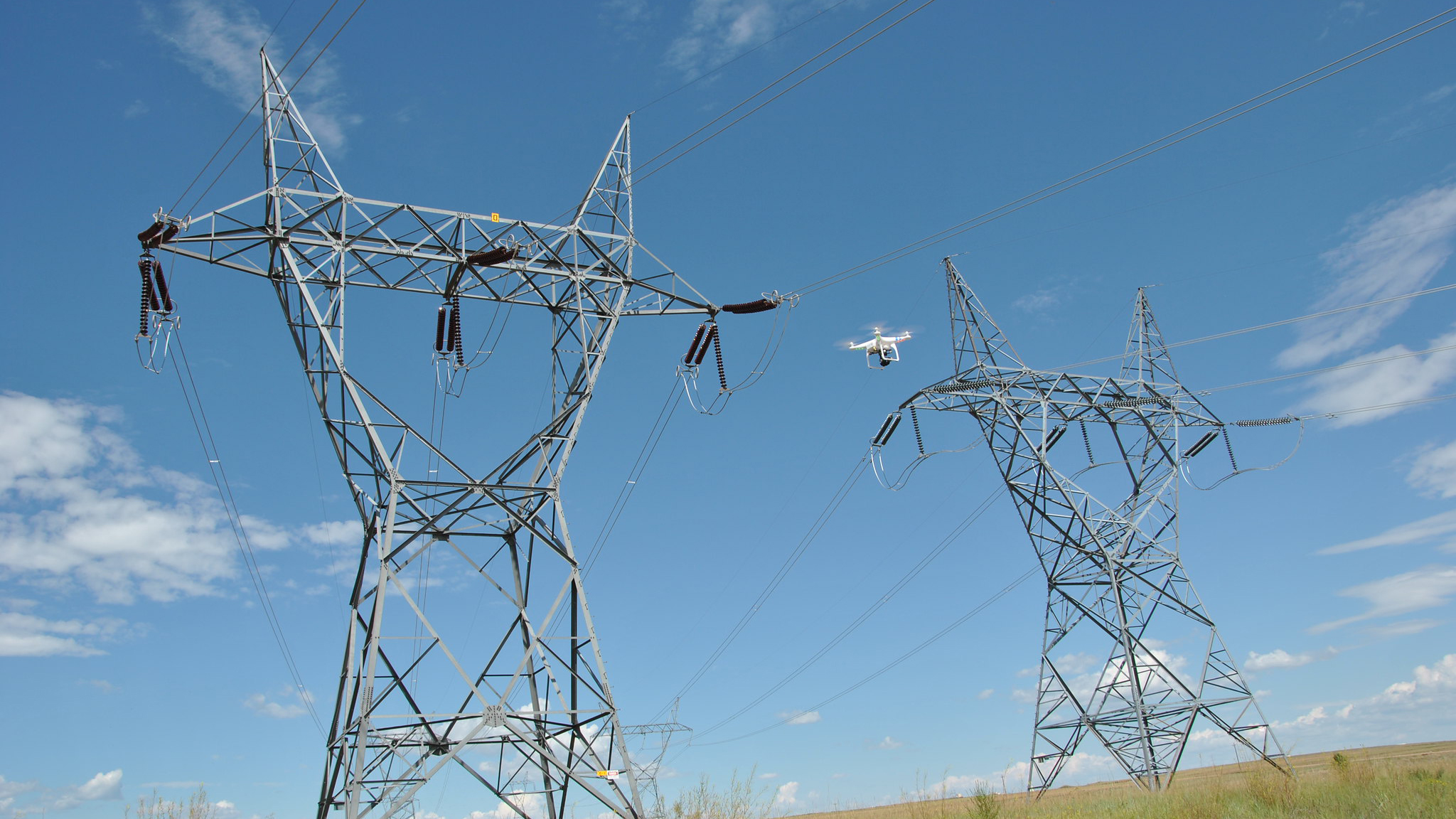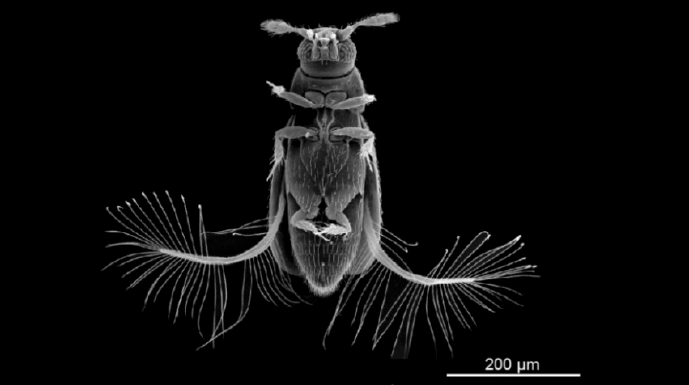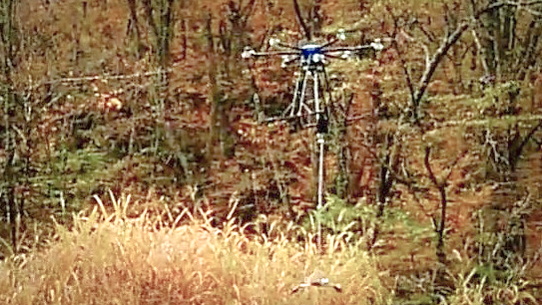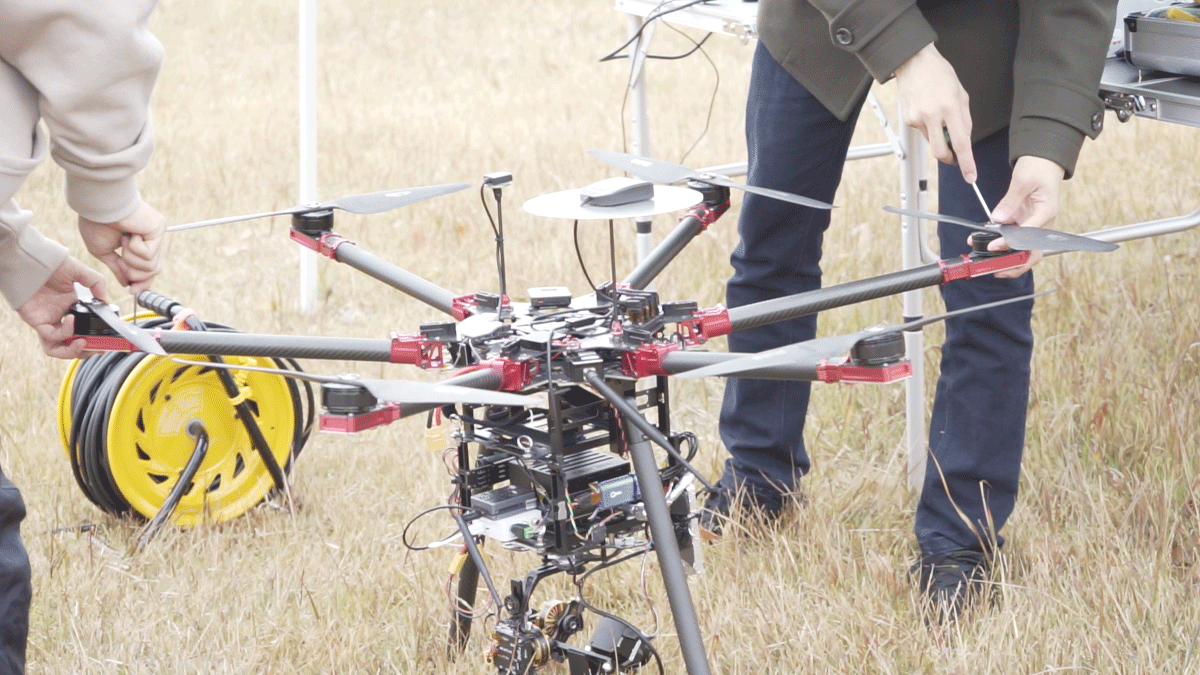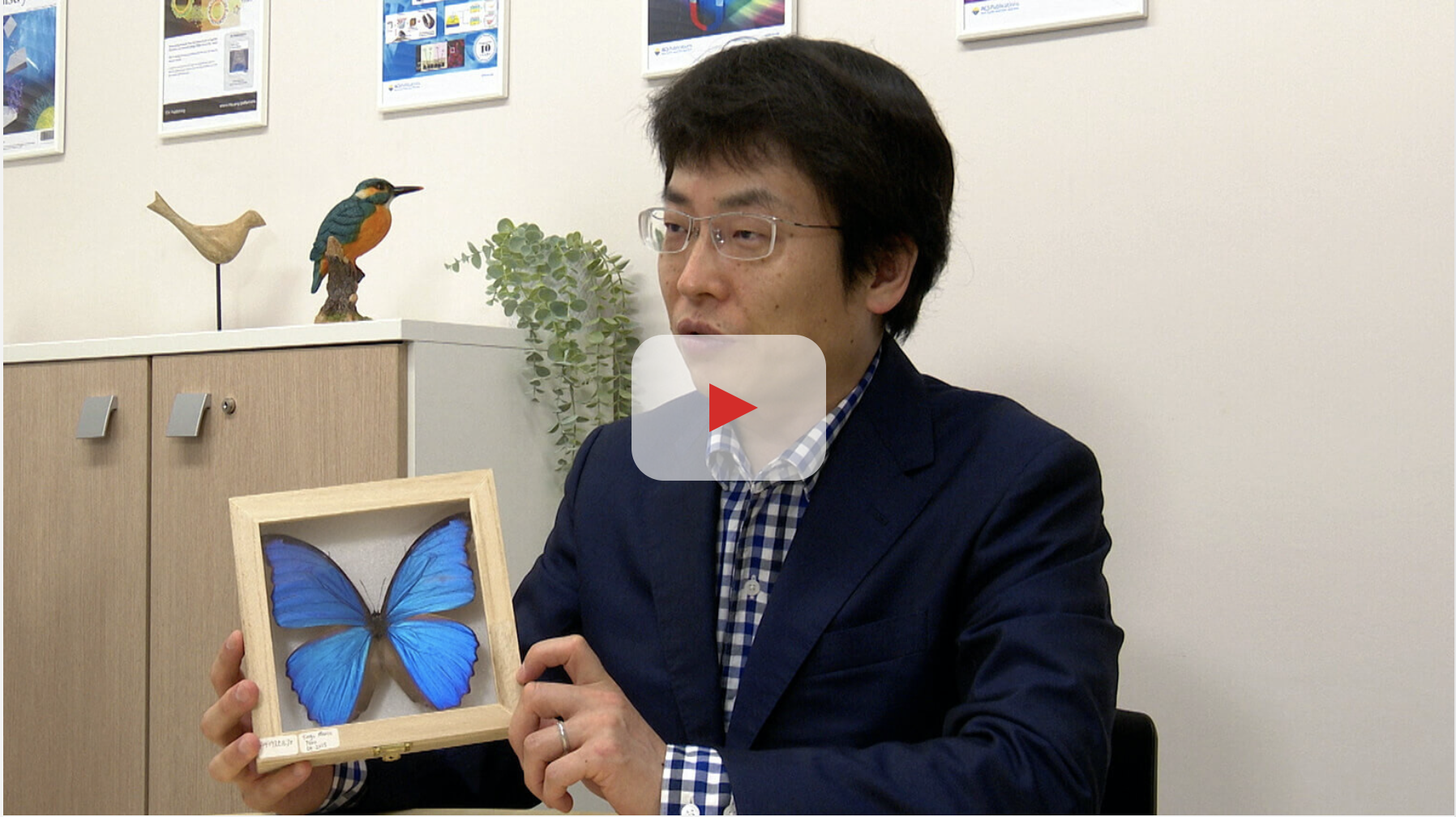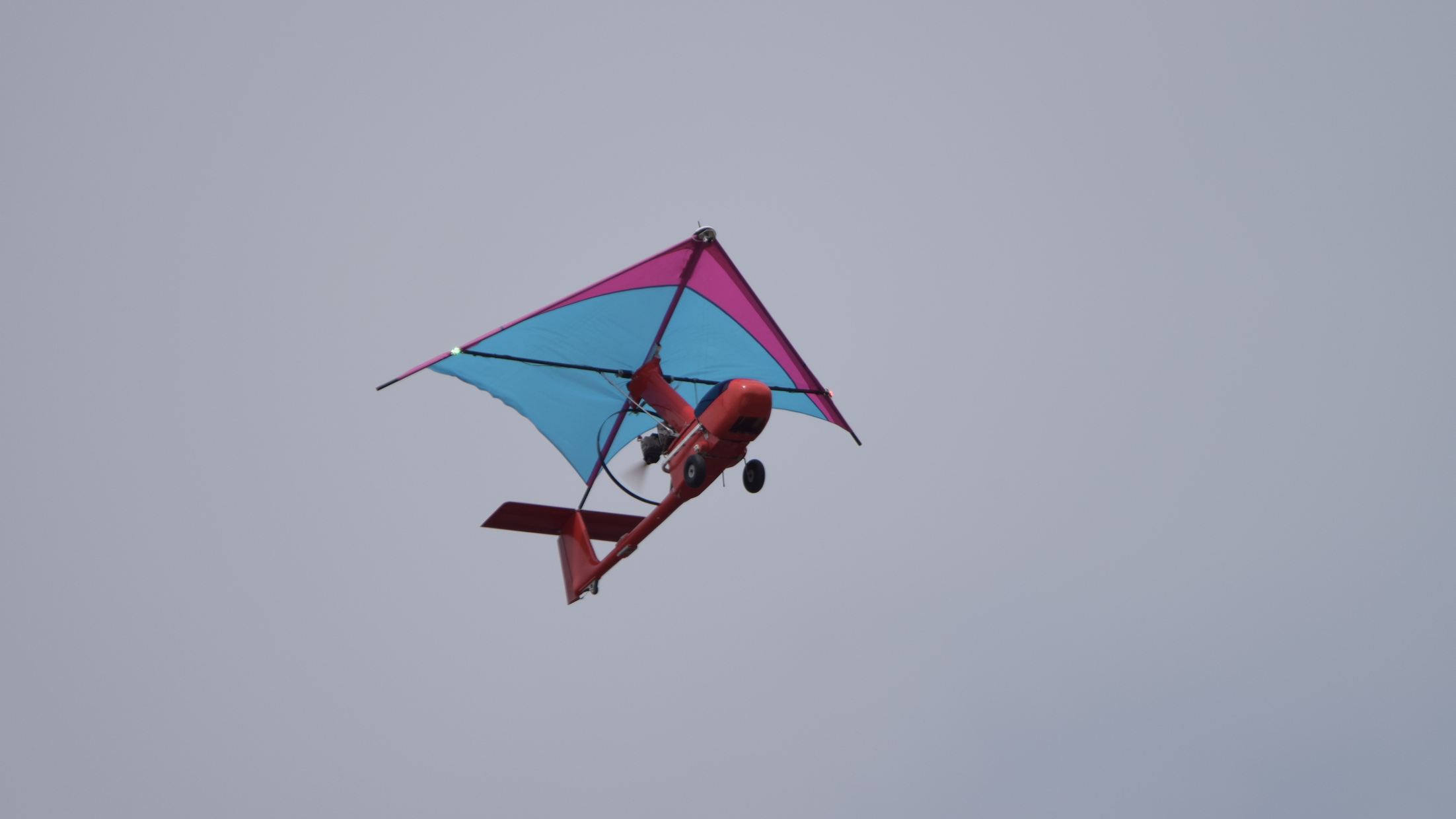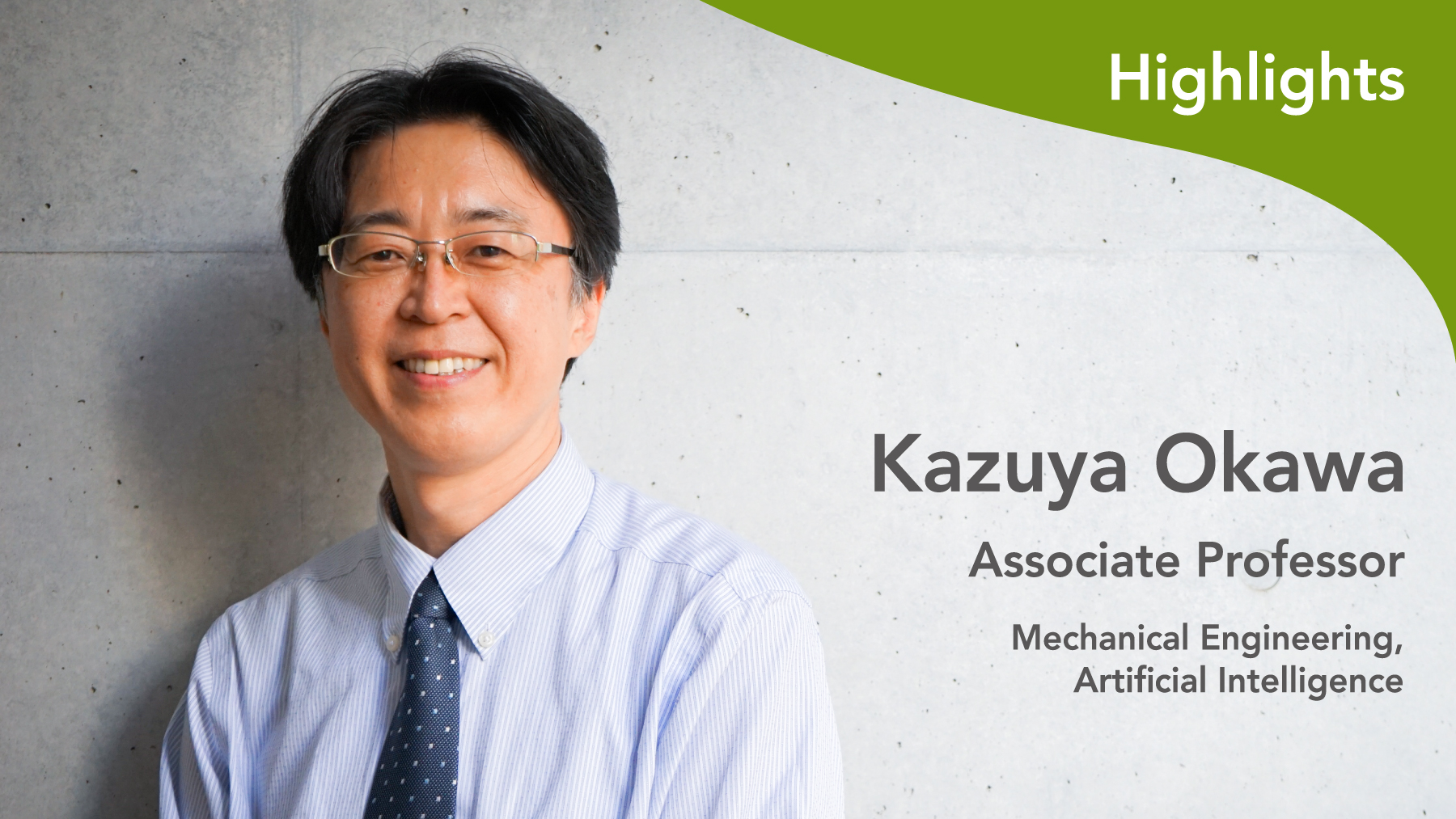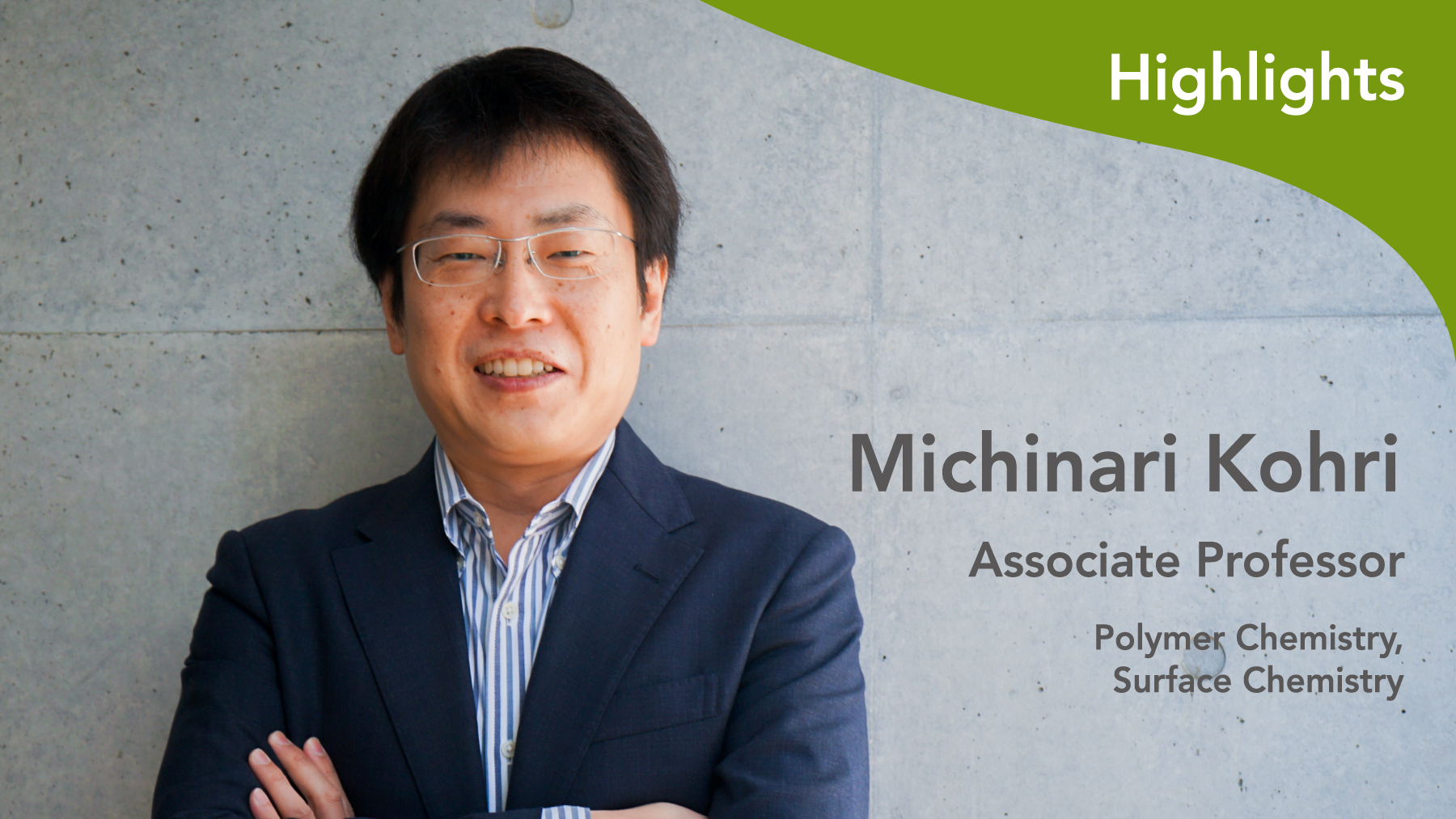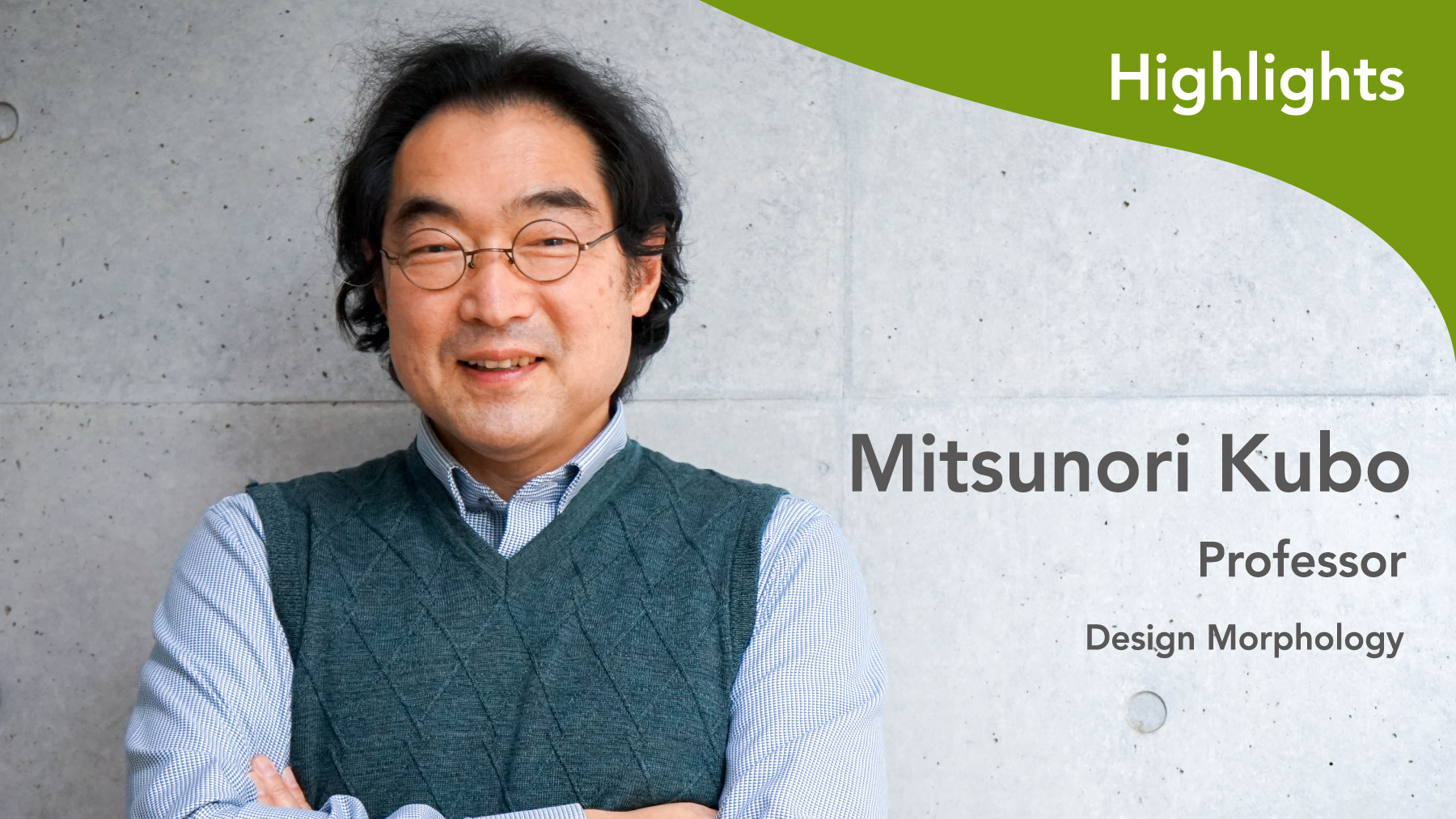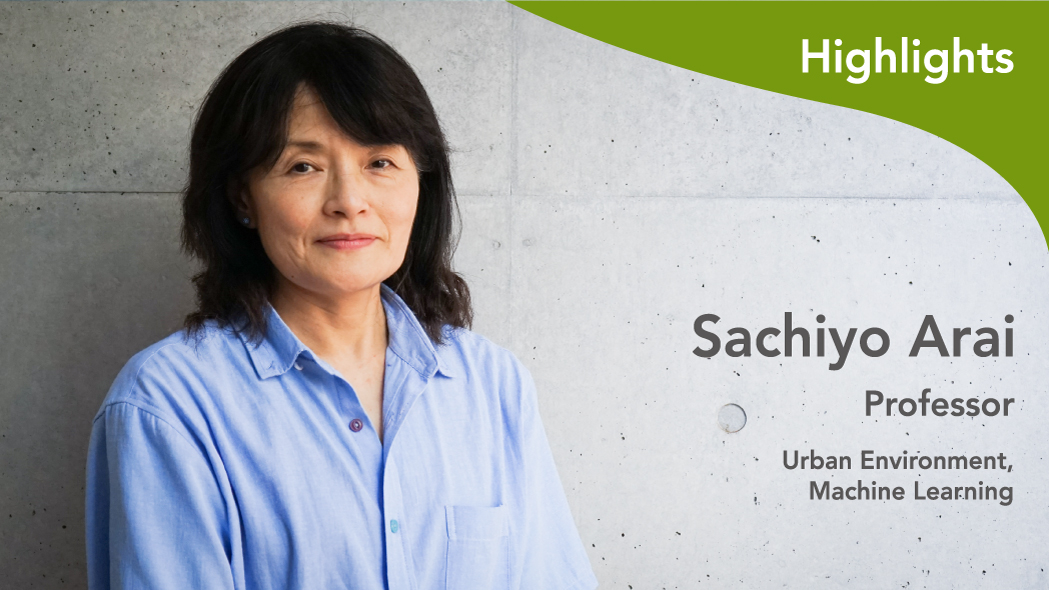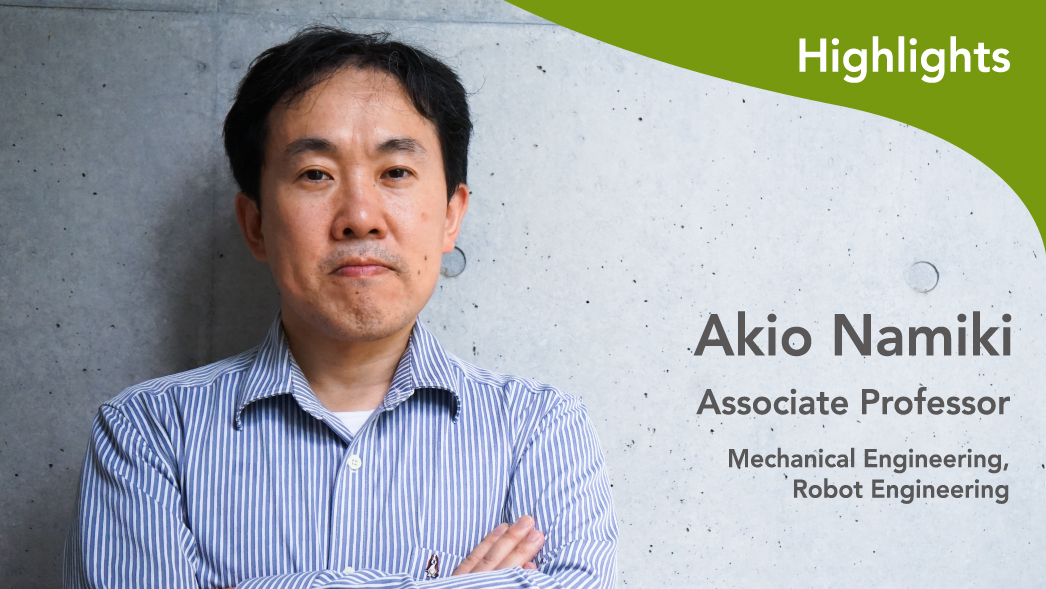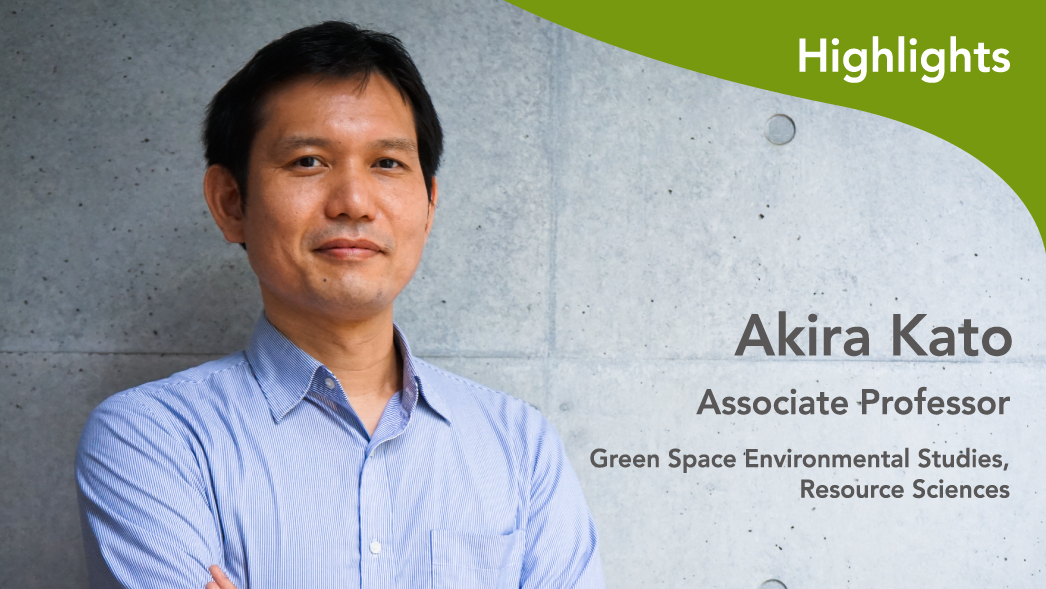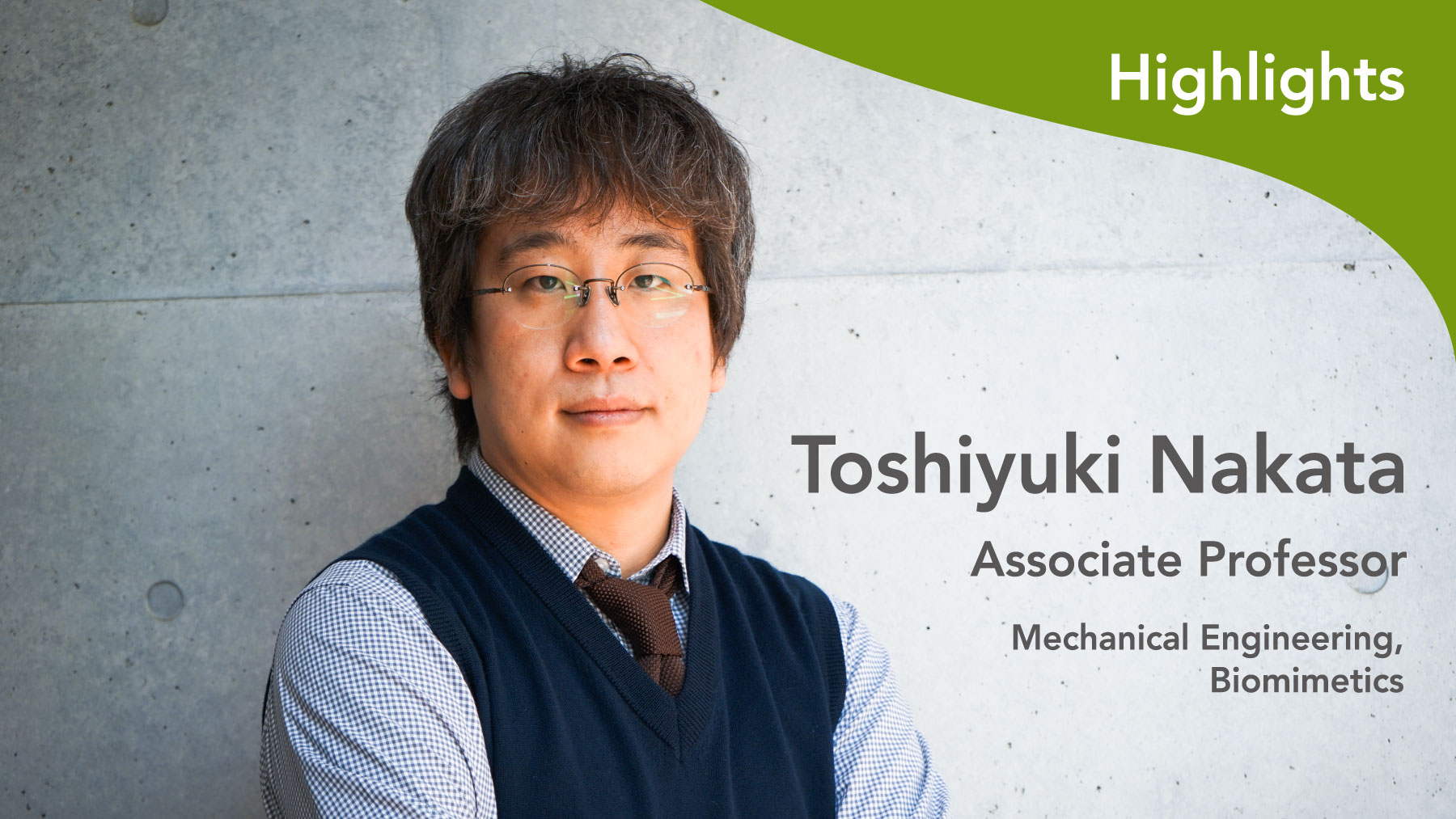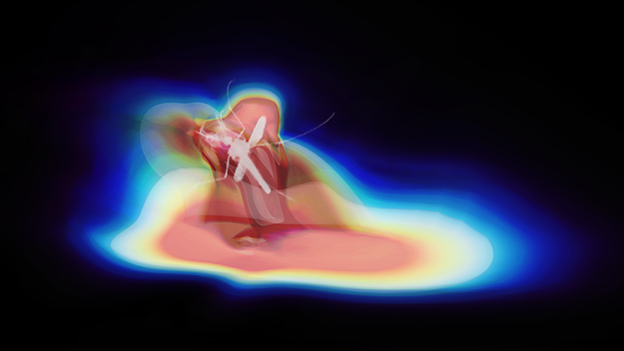CONCEPT
The Center for Aerial Intelligent Vehicles (CAIV) in the Graduate School of Engineering at Chiba University has been established to research and develop flight system technologies for next-generation urban air mobility (UAM), such as small unmanned aerial vehicles (drones), and to foster young researchers in related fields. We promote the development of flexible, strong, and environmentally friendly technologies based on three pillars: bioinspired engineering creating sustainable technologies based on living creatures in nature, new types of artificial intelligence (AI), and future-oriented capacity development.
Momentum and Challenges of the Industrial Revolution in the Sky
The term “industrial revolution in the sky” has been used in Japan since 2016 in reference to utilization of small drones in a variety of industrial applications.
Potential industrial applications for such drones currently include observation, infrastructure inspection, surveying, agriculture, logistics, and confined space operations. Drones are still in their infancy in terms of technology, presenting many challenges relating to safety, reliability, durability, and flight performance compared to the mature automotive and aircraft industries. However, the drone market and technology development are rapidly entering a period of global upsurge.
New industries are now being created for future electric aircraft and air-mobility-based solutions such as small drones and flying cars. CAIV is contributing to this goal through its research and development for next-generation drones.
Challenges for Drones Flying at Low Altitudes
Small unmanned aerial vehicles (drones and flying cars) mostly fly in airspace at altitudes of 1 km or less. Since they have small airframes and their flight is unstable and prone to crashes due to air turbulence caused by the natural environment and man-made structures, the major challenge is to improve robustness (the ability not to crash) and intelligence (the ability not to collide). Since a theoretical framework does not yet exist for these fundamental technological bottlenecks, there is great momentum and challenge in R&D.
Next-generation Drones Inspired by Living Creatures
For hundreds of millions of years, insects and birds have flown through complex natural environments at the same low altitudes (below 1 km) as small unmanned aerial vehicles. The flight of such creatures harbors myriad wisdom, such as robustness, control intelligence that is resistant to wind disturbance, and intelligence to avoid swarming collisions. CAIV is developing next-generation drones inspired by these flying creatures and is trying to connect this development work to the electric air mobility industry, which has low environmental impact.
――Why do you focus on living creatures?
The 20th century, when the airplane emerged, was the age of physics. Entering into the 21st century, I think that, in a sense, we are in the age of biology.
CAIV aims to trigger a paradigm shift for small aircraft air mobility in a future society, and to create a new type of energy-saving, recycling-based, sustainable engineering.
Looking back over the history of human progress, we can see that humans have always sought to prosper. We have pursued science and technology to increase human population and productivity. However, the quest for high efficiency has led to mass production and mass consumption, resulting in an unsustainable technology system. To me, the global warming and climate change we are currently experiencing seem to be major byproducts of this technological system.
――Is the evolution of living creatures different from the progress of humanity?
Looking at the evolution of living creatures in nature, we can see that they have coexisted and prospered without any environmental destruction. There is a contrast between humans and other living things in terms of the art of working with nature to live or a system of “technology”.
Whereas human beings have used metals, fossil fuels, and nuclear power as energy to create products at high temperatures and pressures, living creatures have used organic matter that originally existed on earth, the sun, and wind as energy to self-organize and build a sustainable, recycling-oriented society with low environmental impact.
|
Technological Systems
By Mankind |
Technological Systems
By Living Creatures |
| Substances |
Iron, copper, aluminum, silicon, and other rare elements |
Organic substances,
general-purpose elements, CHNOPS |
| Energy |
Fossil fuels, nuclear power |
Solar energy, chemical energy |
| Manufacturing methods |
High temperature, high pressure, lithography |
Normal temperature, normal pressure,
self-assembly |
| Sustainability |
High environmental impact, consumption model |
The global environment is sustainable,
low environmental impact and recycling |
Comparison between the technological systems of human and non-human creatures. The term “technology” here refers to the techniques by which living creatures survive by working on earth and in nature, and how they make use of them. Humans and living things have different "technological systems" for matter, energy, and methods of making things.
(Reference: The Journal of the Japan Society of Mechanical Engineers, “Preface to the Special Issue on Biologically-based Mechanical Engineering –Biomimetics for Sustainable Society–”, Vol. 2, No. 1143, 2014, Vol.2, No.1143, 2014)
What is bioinspired engineering?
――When did bioinspired engineering begin?
In the 15th and 16th centuries, Leonardo da Vinci studied the flight of birds and made various sketches. Da Vinci created the prototype of the airplane, and the idea of creating a rotating wing inspired by the flapping of birds’ wings in the natural world was a novel one.
His sketches showed that flapping wings which are larger than human-size can be powerful enough for flight, but even now a flapping flying machine of this size has yet to be built. After da Vinci's concept, the Wright brothers were the first to build a flying body with two fixed wings stacked on top of each other, as they thought a model with fixed wings would be better than one with flapping wings.
Since they did not have a motor at the time, they used a steam locomotive to turn the propeller instead. At CAIV, we are currently developing a robot with a body measuring a few centimeters that can fly by flapping its wings.
(Left)Codex on the Flight of Birds by Leonardo da Vinci, 1505
(Right)The Wright brothers made their first successful flight on December 17, 1903 (Source: W. Shyy, H. Aono, C. Kang, H. Liu, An Introduction to Flapping Wing Aerodynamics, Cambridge University Press, 2013.)
The intelligence of living creatures
――What is the difference between existing AI and intelligence of living creatures?
Current AI relies on a computational method whereby you build a large database of existing examples and induce “intelligence” through iterative machine learning.
Living creatures in the natural world use their intelligence to evolve and discover new things while interacting with their environment. Existing AI is not yet “intelligent” from a biological perspective.
There are two types of living creatures: those with “active intelligence” and those with “passive intelligence.” We can refer to these as “yang intelligence” and “yin intelligence.” Current AI focuses on yang intelligence, but little research has been done on yin intelligence.
――What kind of new AI is CAIV targeting?
At CAIV, we are trying to clarify the fundamental design principle of stable flight by explaining how these two types of intelligence, yin and yang, interact to achieve robustness in living creatures.
For example, a flying creature tries to return to its original posture after a disturbance such as a gust of wind, but after that, it is relaxed. By imitating these simple controls, we can achieve more efficient and stable flight compared to continuous control, which is a traditional way to regulate a flight.
For example, the small flapping robots that we are developing, shown in these two videos, are not equipped with any controls. In the upper video, a rigid mechanism is used like an existing squadron, but in the lower video, a flexible mechanism is used for the fuselage, imitating an organism. The flexible mechanism generates the torque of flapping and the momentum of rotation, which cause the torso to vibrate and move passively, generating the opposite torque as well. In addition to changing the material of the fuselage, I think that by adding passive motion such as fuselage deformation, flight will become more stable.
How to develop leadership
――What types of young researchers do you want to foster at CAIV?
We would like to use CAIV as a learning platform for students to learn about the history of human technological innovation and its reflection.
At CAIV, there are mechanisms that allow students to learn on their own initiative. It differs from the traditional style of university education, where you get credit for a class and do your graduation research on a topic set by advisers.
Students are given chances to choose and participate in projects that they are really interested in from variety of options, and learn by acquiring the knowledge they lack while engaging in the process of research.
――What are the strengths of Chiba University?
Chiba University is traditionally famous for its design engineering, and fortunately two faculty members specializing in industrial design are involved in CAIV. We are trying to incorporate designs that combine function and aesthetics.
By adopting a proactive learning approach and a design perspective, we are able to produce motivated, highly skilled students who go out into society with an awareness of sustainable technology.
We want our students to develop the ability to thrive while adapting to a changing environment in order to achieve their targets. I believe this is one of the strengths that we can learn from living creatures.
In recent years, R&D on flying robots and drones has become fiercely competitive around the world. In particular, the most important elements in realization of an "air mobility revolution" are research and development on intelligent flight robotics technology that satisfies the safety, efficiency, and environmental requirements of next-generation electric air mobility, as well as the training of young people in the drone field.
In this course, we will conduct interdisciplinary research on intelligent and robust flight systems based on insects and birds to create innovations for the next generation of flying robots. In addition, we will develop and establish the most advanced elemental technologies for drones through industry-academia collaboration, and by combining optimization from the perspective of mechanical performance and beauty from the perspective of design, we will create a "biomimetic industrial design" for drones, aiming to contribute to the construction of an air mobility industrial base for the society of the future.
Duration of Endowed Course
October 1, 2019 - Septermber 30, 2022
The University of Tokyo Edge Capital Co., Ltd./ The University of Tokyo Edge Capital Partners Co., Ltd.
3F, South Research Building, University of Tokyo, 7-3-1 Hongo, Bunkyo-ku, Tokyo 113-8485, Japan
Tomotaka Goji, Managing Partner and President
Advanced Robotics Foundation (ARF)
6F Fuji Chuo Building, 2-1-7 Shintomi-cho, Chuo-ku, Tokyo 104-0441, Japan
Kenzo Nomami, Chairman of the Board
Researchers at Endowed Course
Wang Wei
Special Appointed Professor
Professor, Nanjing University of Information Science and Technology
Kouichi Yonezawa
Special Appointed Associate Professor
Senior Research Scientist, Central Research INstitute of Electric Power Industry
The Intelligent Flight Center promotes collaborative research of various sizes utilizing the expertise of participating faculty members. Please feel free to contact us if you are in a public institution or a company interested in work with us.
